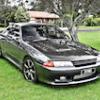R32 Heavy Power Steering - How To Disable Speed Variable Assist Steering And Control Power Assistance Level.
Announcements
-
Similar Content
-
Latest Posts
-
Same thought crossed my mind ~ depends on how one connotes 'stalling'...ie; gets a rough/stumbling idle as it get warm until it stalls... or... idles ok and simply falls-over when it gets to temp... ...you can test the whole circuit with a couple of resistors ...unplug coolant temp sensor, bridge terminals with a 2K7 resistor (ECU will do cold start), or with engine warm bridge with a 330R resistor (ECU will consider engine to be at normal operating temp)...it's a quick way to check wiring integrity/ECU response when you don't have a multimeter handy ...
-
By Murray_Calavera · Posted
They also make them with the motor mounted on the side -
Just be warned that that turbo will not be a direct re-fit to the car. The exhaust housing is, of course, in the same place. It has to be - it's bolted to the exhaust manifold. So the dump will fit up. But the centre housing is not as long, so the comp housing will move backwards. This will affect both the turbo inlet and the outlet. There is fab work that needs to be done. Yes. it has one, it should have one. Paper gasket.
-
By PotatoCake · Posted
I only recently purchased the vehicle, it came with the flex setup but the current tune is e85 only, which is why im wanting to get the tune redone to enable a mixture. First i need to get the exhaust redone tho. I was thinking of getting a varex muffler but it sems they dont fit well in the 33 (hang low because of the valve mechanism which sticks out on top) and generally dont sound good. So that leaves me with redoing the entire exhaust (more resonators and mufflers) so its not a menace when i come and go from home, and then have the aes dump valve somewhere along the line to really open it up. I was thinking of having it before the cat but after seeing how insanely loud it will be (on a vl turbo) im thinking of putting it more towards the rear of the car, after one of the resonators.





Recommended Posts
Create an account or sign in to comment
You need to be a member in order to leave a comment
Create an account
Sign up for a new account in our community. It's easy!
Register a new accountSign in
Already have an account? Sign in here.
Sign In Now